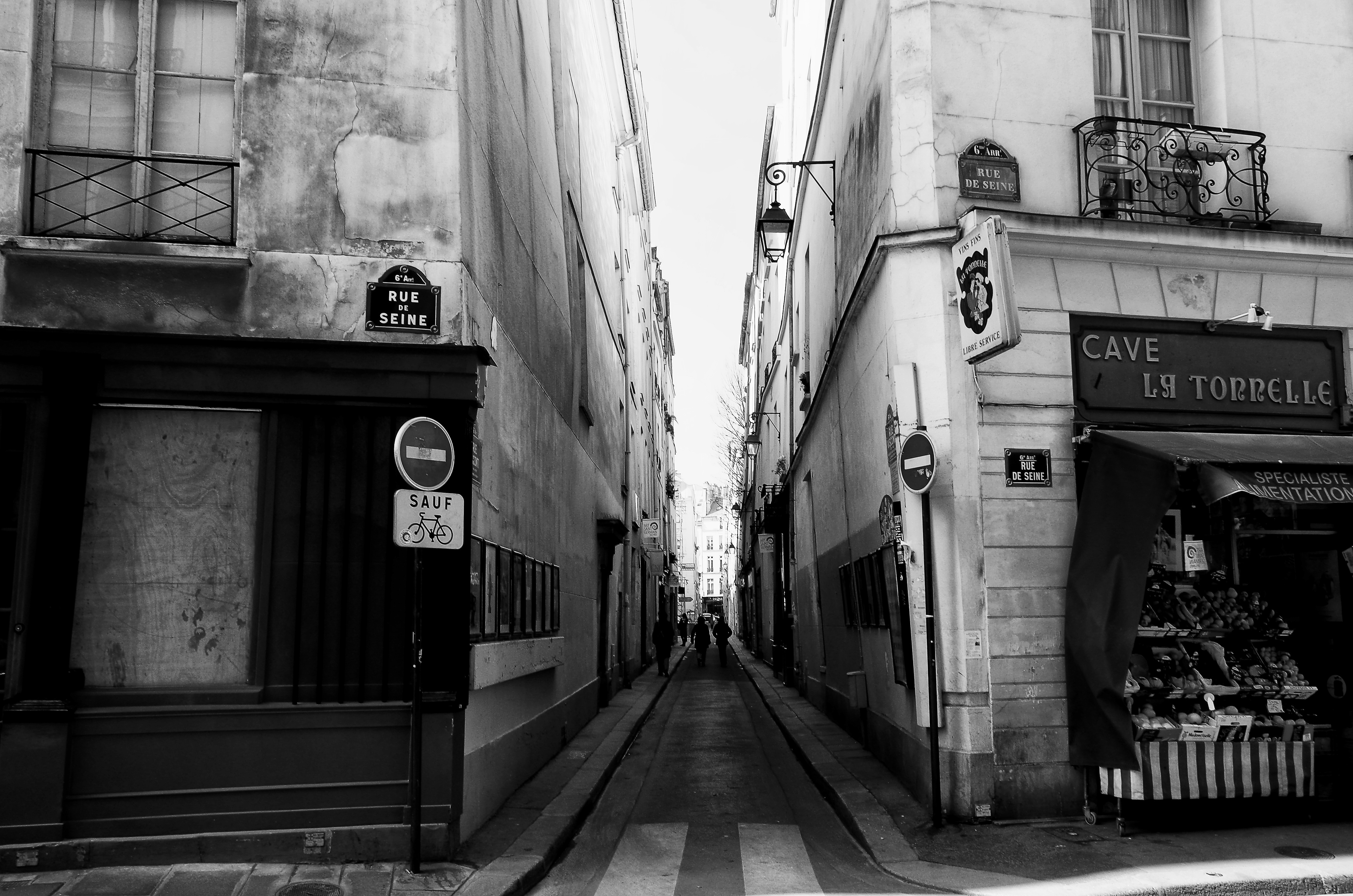Pompidou Cultural Centre (Beaubourg Centre)
Located in the heart of the 4th arrondissement, the Pompidou Cultural Centre is one of the most famous buildings in Paris. It was named after French President Georges Pompidou, a contemporary art enthusiast. In 1969, he decided to build a multicultural center to display France's impressive art collections, as well as a cafe, cinema and public library where French students could study.
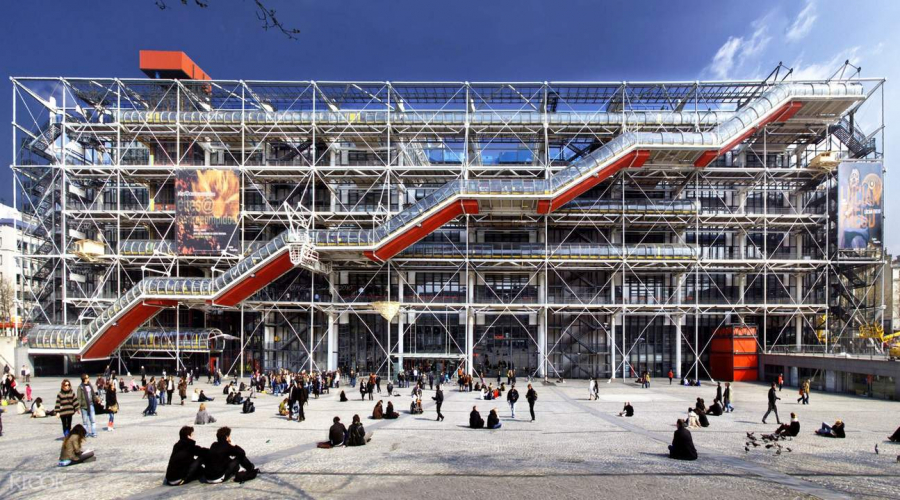
Inaugurated in 1977, the Pompidou Cultural Center has a steel and glass facade, and the entire building is crisscrossed with large, long pipes resembling gas pipes. Therefore, for the people of Paris, who love the graceful and luxurious beauty, Pompidou is considered "the mistake of the century", a "hideous monster".
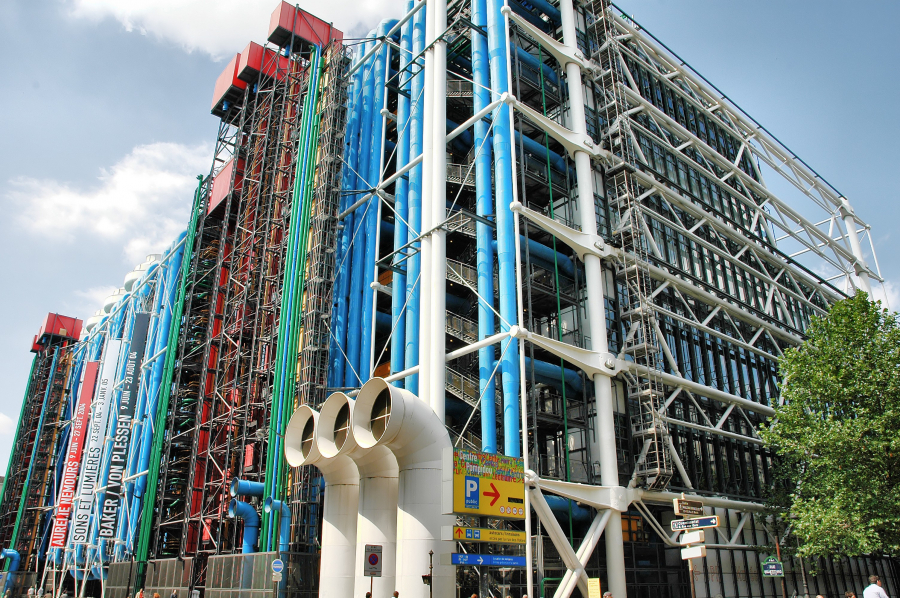
However, with its magnificent collection of all cultural fields, along with a cinema, a music performance hall, a place to organize cultural activities for children, etc., Pompidou has achieved great success despite criticism of its external architecture. After 40 years of opening, the Pompidou Cultural Center has become one of the symbols of contemporary art, the largest cultural center in Europe and one of the most visited buildings in Paris.
Paris Philharmonie
Inaugurated in January 2015, the Philharmonie de Paris is a complex consisting of a 2,400-seat hall reserved for large-scale concerts, many small stages, a music museum, a library, an entertainment space with restaurants, bookstores...
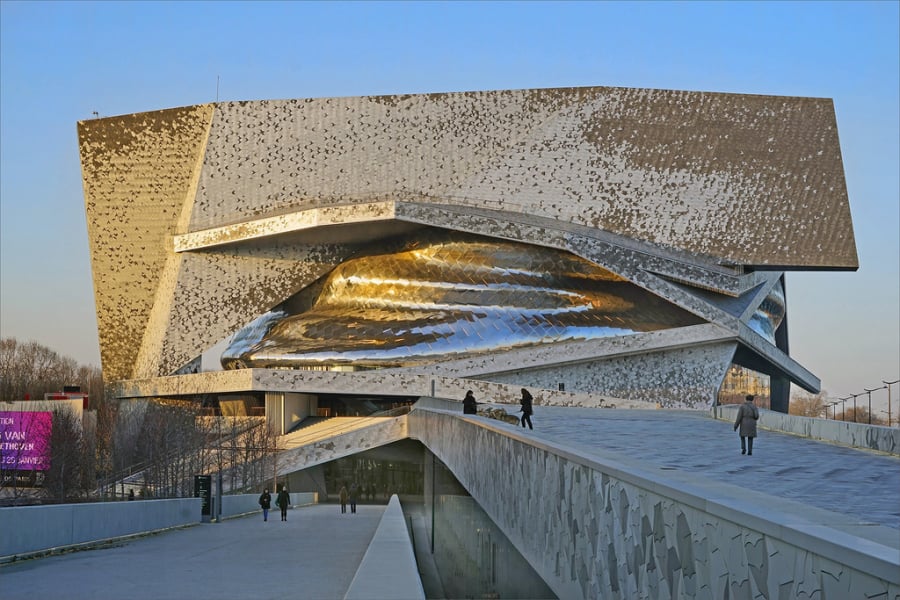
Located in La Villette park in the 19th arrondissement, the theater is an ambitious project (built in 8 years with the hard work of 600 workers) and expensive (386 million euros - about 9,800 billion VND).

The building is designed like a solid hill, covered with silver steel and glass, which can change color according to the sunlight. The arched roof covered with raw wood helps the sound to be sharp, creating a comfortable feeling for the artists and the audience. The audience also does not sit facing the stage like the traditional model but sits around. In addition, there are suspended balconies surrounding the center of the stage, helping the sound spread in all directions, making the audience feel "immersed" in the musical space.
Louis Vuitton Art and Culture Center
Located within the grounds of the 19th-century Bois de Boulogne park in western Paris, the Louis Vuitton Arts and Culture Centre impresses anyone who visits with its organic shape, reminiscent of a ship, a fish, a sailboat or even a cloud…, and with many metaphorical meanings.
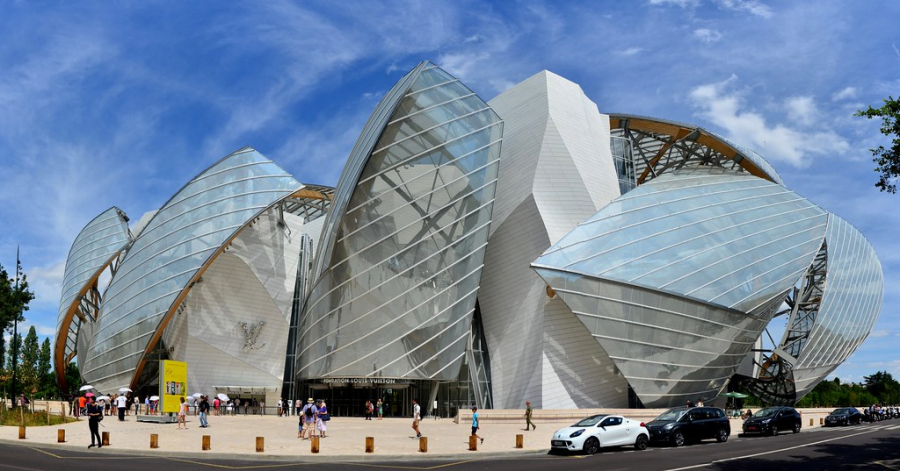
The building was designed by the talented architect Frank Ghery, who has successfully combined modernity, aesthetics in shape and personal mark through the use of 3,000 glass panels of different curvatures and sizes. The sails are supported by countless steel and wood bars, connected to the interior structure as if moving in the wind, reflecting the water surface, the trees in the park and changing color continuously according to the time of day.

La Géode Cinema
Built in 1985, La Géode cinema is a prominent architectural work in Paris. The building is shaped like a giant ball, 36 meters in diameter, equivalent to a 12-story building. It is covered with nearly 6,500 triangular stainless steel panels, each side 1.2 meters long, reflecting the surrounding landscape.

In addition, this is also a cinema equipped with modern technical equipment: OmnimaxTM projectors and 4K digital projection systems. Each cinema room has a hemispherical screen, 1,000 m wide.2Made from perforated aluminum panels and 400 seats tilted 27 degrees horizontally.
Les Halles neighborhood
Located in the 1st arrondissement, Les Halles was once an ancient Parisian market. Today, it is a large park with the underground Forum des Halles shopping mall and the underground Châtelet Les Halles train station.

After a five-year construction project that cost more than $1 billion (VND23 trillion), in April 2016, a majestic 25,000 m2 glass dome2The Forum des Halles shopping center has been completed. This is one of the most beautiful and unreal architectural works, likened to a giant transparent umbrella floating in the splendid Parisian sky.
Building of the French Ministry of Culture and Communication
Located at the intersection of Saint Honoré and Croix des Petits-Champs, the French Ministry of Culture and Communications building was modernized by architect Francis Soller in 2004 and is an interesting example of contemporary architecture. The building has a facade made of stainless steel panels, which look like they are wrapped in a giant fishnet.
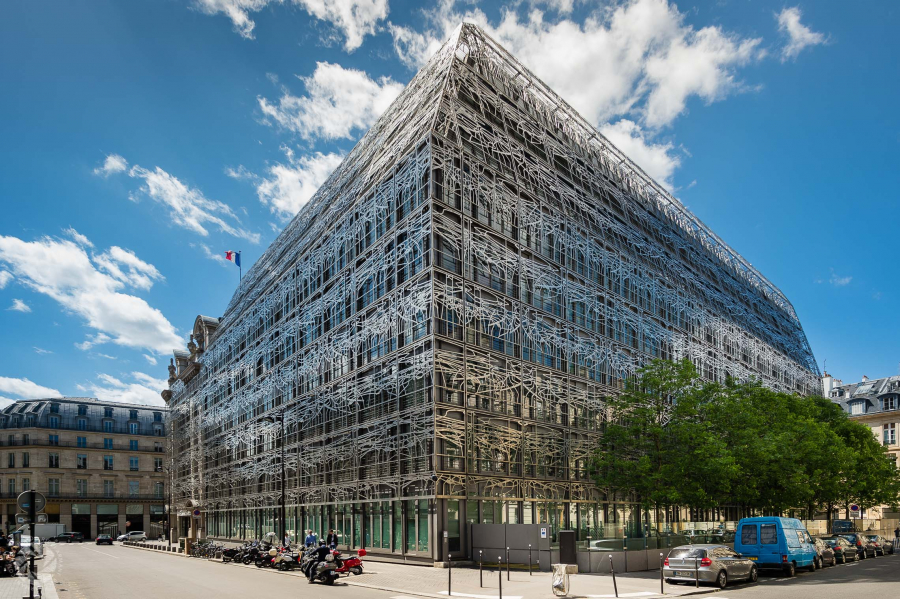
The contrast between this building and the surrounding traditional buildings has caused much controversy. However, many consider it one of the most beautiful structures in Paris, especially at dawn or dusk, when the brilliant sunlight hits the building, making it sparkle.
Loo's House
Located in the 8th arrondissement of Paris, next to the Monceau Park, Loo's house is now a Chinese museum. The house was designed for a wealthy Chinese merchant, Ching Tsai Loo, in the early 20th century. He missed his country so much and wanted to give Parisians an opportunity to explore Chinese culture, so he decided to build and turn it into a private museum, displaying his collection of Chinese and Asian art and antiques.

Besides its impressive red exterior and typical Chinese architecture, the building also has a lavish interior with rooms decorated in different themes, making it one of the most interesting buildings in Paris to this day.





